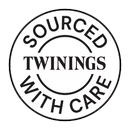News
Closing the Living Wage Gap

In 201 a community needs assessment undertaken by Twinings with tea smallholders and workers in Nandi county showed that poor access to healthcare facilities and information was having a detrimental effect on women’s wellbeing as well as putting pressure on family finances, as illness and high fertility rates reduced productivity leading to lower incomes.
In 2021 we partnered with The Lorna Young Foundation (LYF) to understand how The Farmers’ Voice Radio (FVR) could be used to support smallholder farmers in Sireet OEP in Nandi County in Kenya, where Twinings was already working with Business for Social Responsibility (BSR) and implementing the HERHealth programme. The Sireet OEP Cooperative has 12,000 smallholder tea farmer members organised into six zones, of whom around 30% are women.
The Lorna Young Foundation (LYF) aims to reduce poverty in developing countries by strengthening smallholder livelihoods, through better access to information, expertise and markets. LYF’s flagship Farmers’ Voice Radio (FVR) initiative connects farmers to the knowledge they need through participatory radio programming, broadcast in the most relevant local language in the farmers’ own voices. These programmes add value and scale to face-to-face agricultural extension models and improve knowledge, attitudes and practices, resulting in increased yields and quality, better
Building on this partnership with LYF, we successfully secured funding from the Foreign, Commonwealth & Development Office (FCDO) in 2023 as part of their Work and Opportunities for Women (WOW) initiative, extending the programme to September 2024, and incorporating new climate-smart agriculture content, designed by women farmers focusing on climate smart agriculture techniques. Climate-smart agriculture (CSA) is an integrated approach to managing landscapes, cropland and livestock that address the interlinked challenges of food security and climate change. CSA contributes to increasing farm productivity and incomes, building greater resilience and minimising agriculture’s greenhouse gas emissions, for example by diversifying crops or introducing new farming methods such as fertiliser use. This extension increased the potential reach of the radio programme from 12,000 farmers to 50,000.access to services, finance and markets, stronger supply chains and resilience to climate change.

